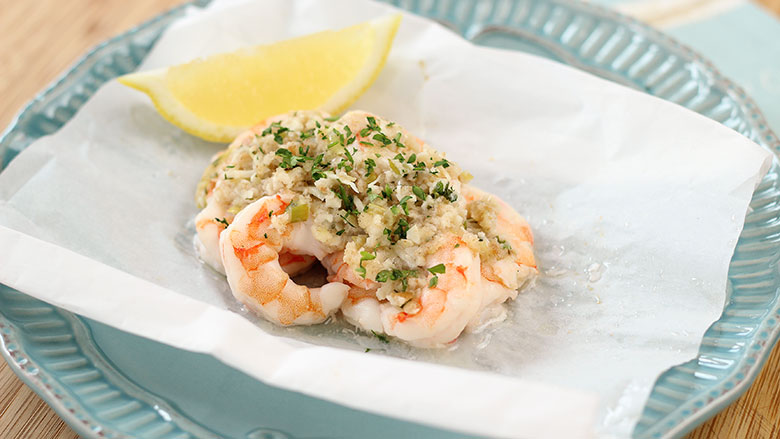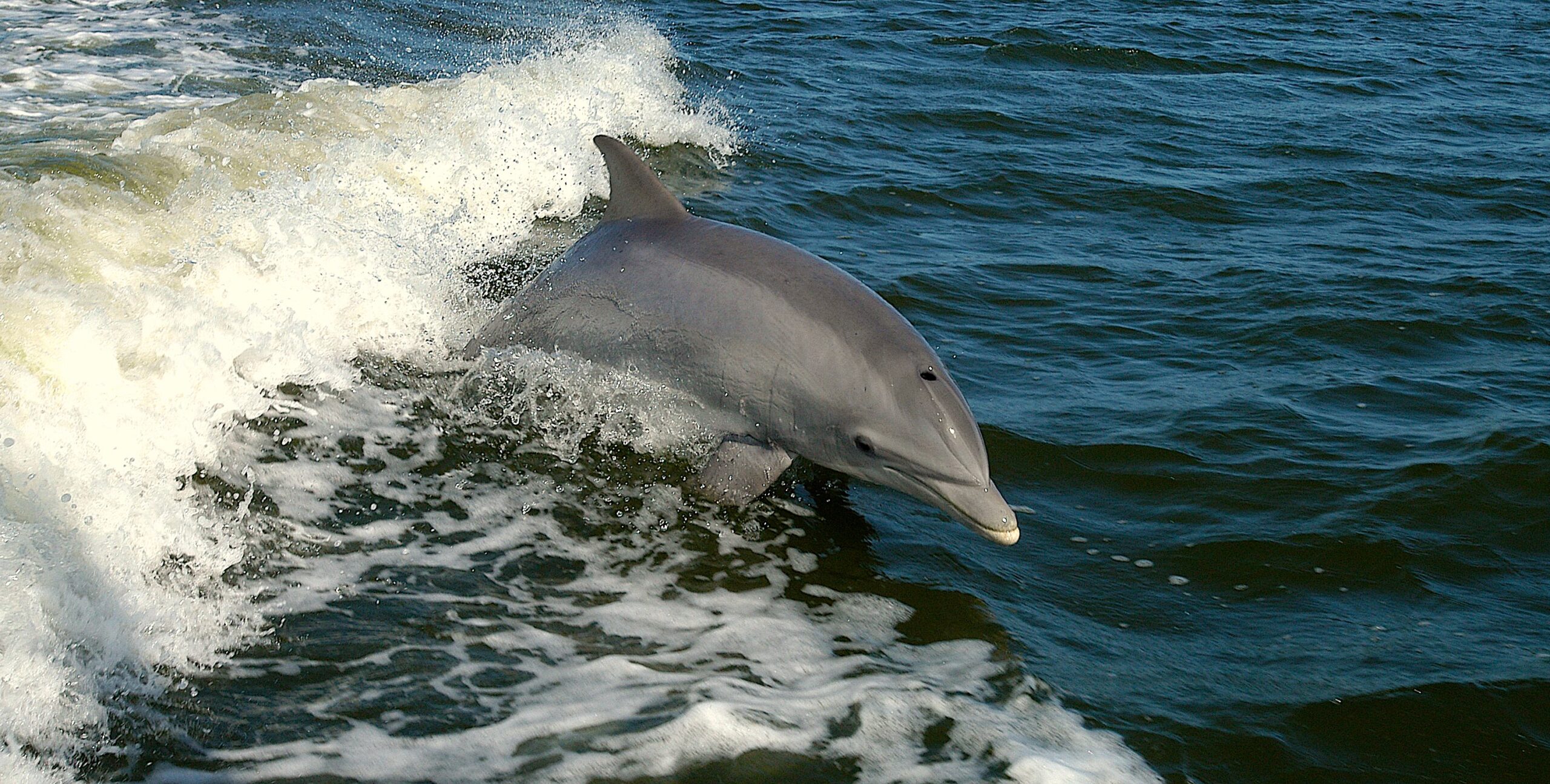Bay scallops have been enjoyed in North Carolina since the time when our state’s only inhabitants were Native Americans. Recreational and commercial harvest is part of the state’s culture, with the winter scallop harvest historically providing fishermen income during a part of the year when the availability of other species dwindles.
However, North Carolina’s bay scallops have experienced years of low numbers. Researchers and policy makers are focused on finding out why the scallops are suffering and developing ways to sustain populations for the future. A reopening of scallop fishing in some areas in 2009 could mean that the scallop population is on an upswing, but it is too soon to know for sure.
“They are an incredible local seafood product as there are very few areas with naturally occurring bay scallop populations,” says Mark Hooper, owner of Hooper Family Seafood, a small seafood company in Smyrna.
“There was usually a pre-Christmas season that many fishermen found important to pay holiday bills.” The yearly scallop harvest was always a small boat operation with fishermen working in close proximity to each other, he adds. “There was a good deal of friendly banter, and fishermen would help each other top up their limit towards the end of the fishing day.”
In 1928, the state led the nation in bay scallop production with a harvest of 1.4 million pounds of meats. However, the North Carolina bay scallop population has been in trouble in more recent years. In 2004, the harvest hit a low of less than 150 pounds. Another scarce harvest in 2005 caused the N.C. Division of Marine Fisheries (DMF) to close bay scallop fishing in 2006. As recommended by the 2007 Bay Scallop Fishery Management Plan, it remained closed in 2007 and 2008 while biologists worked on setting a target index that would indicate that stocks were healthy enough to reopen fishing.
The management plan’s purpose is to implement a strategy that restores the stock, maintains its sustainable harvest, maximizes the social and economic value, and considers the needs of all user groups.
“We were supposed to begin the plan’s development in 2006, but moved it up to 2005 because so few landings were made in the prior years,” explains Tina Moore, a DMF fisheries biologist.
The plan will be revised in 2012. Having the plan in place opened the door for research, Moore says, “hi the next five-year update, we will look at what worked and make recommendations.”
A SPECIES AT RISK
The reasons behind the drop in scallops are multifaceted. The bay scallop requires a specific habitat of high-salinity beds of submerged aquatic vegetation, which are found only in certain estuarine areas. Scallop larvae attach to the vegetation then drop to the bottom once they reach about one inch. In North Carolina, most bay scallops are found in Core and Bogue sounds and occasionally Back Sound, the lower portion of New River and along Portsmouth, Ocracoke and Hatteras islands in Pamlico Sound.
But scallops in different North Carolina sounds are largely isolated from each other. Very few scallop larvae are naturally transported between communities, making repopulation of a damaged or eliminated population unlikely without some type of human intervention. The short lifespan of bay scallops — about 20 months — means that one bad growing year in terms of temperature, salinity, habitat, water quality, predation or poaching, could mean the subsequent elimination of the scallops in a given area.
The general vulnerability of the bay scallop also means that successive harmful events can be catastrophic, as has happened in North Carolina over the last few decades. It began when the state experienced a red tide in late 1987 to early 1988 that killed about 21 percent of adult scallops in Bogue and Back sounds. As a result, only 2 percent of the normal numbers of juvenile scallops were added to the population the following spring.
Then in the 1990s, several hurricanes hit the North Carolina coast. Although it is impossible to know if the hurricanes actually caused the changes in the scallop population seen during that time, hurricanes can damage scallops directly, hurt their habitat and increase freshwater runoff, which changes water salinity. Adding to the struggle, the scallops fell prey to an increasing cownose ray population, which researchers think began in the mid 1990s.
UPPING THE PRESSURE
Fishermen were the first to notice the spike in the cownose rays, and they approached Charles “Pete” Peterson of the Institute of Marine Sciences at the University of North Carolina at Chapel Hill for help.
“The fishermen began complaining about all the cownose rays in their trawls and pound nets,” he says. ‘The rays have poison in their barb, they tangle and damage nets, and there is no current market for their meat, so [the rays] are quite a nuisance to fishermen.” During their fall and spring migrations along the East Coast, these rays enter the North Carolina sounds where bay scallops live. In the past, the scallops survived the ray predation, but increasing numbers of rays were enough to destroy all the scallops in some areas. The fall migration of rays happens before the scallops complete spawning, leaving few offspring for the following year. Peterson and Sean Powers, also of UNC-CH, with colleagues from Dalhousie University in Canada looked higher in the food chain to discover the cause of the increasing numbers of cownose rays.
In a 2007 paper in Science, they reported that a dramatic decrease in great sharks allowed various populations of smaller sharks and rays, such as the cownose ray, to explode. Asian demand for shark fins used for soup and shark bycatch during fishing has hurt shark populations.
The federal government regulates shark fishing, but many large sharks are in international waters or in areas that are difficult to patrol. Increased regulation has helped some species to rebound, but their long lifespan and low numbers of offspring means it will take a long time before there are more large sharks to keep ray populations in check, researchers note.
With help from a Fishery Resource Grant (FRG), which is funded by the N.C. General Assembly and administrated by Sea Grant, Powers and David Gaskill, UNC-CH research technician and commercial fisherman, took a closer look at the cownose ray predation. They found that areas with the densest population of scallops in a given year experienced the highest mortality from rays. The rays seemed to choose sea grass beds with more than five scallops per square meter, but low densities of scallops can hurt the population by preventing their successful fertilization. Bay scallops are broadcast spawners, meaning they release eggs and sperm directly into the sea. If there aren’t any scallops close enough, the eggs and sperm can’t mix. The researchers also found that the ray predation happened over a short time period of two weeks.
More than a decade ago, Peterson — along with Hal Summerson and Joel Fodrie, also at the Institute of Marine Sciences — developed a stockade method to protect the scallops from the rays. It involves inserting poles of PVC pipe about 10 inches apart into scallop beds. The poles need to remain in place only until after the cownose rays have passed through.
As predation increased around three years ago, the researchers began using the stockades again. While Peterson seeks more funding, he continues to install the stockades yearly, placing them in areas where scallops are most abundant across various locations in North Carolina, so that a geographically dispersed set of populations is protected during spawning.
“Ethically, I feel that it should be done,” Peterson says. “The management is needed now so we don’t reach a point where they are gone and we can’t get the scallops back.” He points out that bay scallops are already essentially gone in Virginia, Maryland and New Jersey, and those states must now research how to restore them.
On the downside, the poles can alert poachers to the presence of scallops in an area. Peterson has seen thousands of scallops within a stockade completely disappear in two days and has received reports of poaching.
“Poaching is an increasing problem. Most illegal harvesting happens in the summertime, before spawning, so it is the worst time possible for it to happen. It is exceptionally damaging to the population,” he says.
In another FRG project, Peterson’s research group found that combining the adult protection of the stockades with spat collector bags can enhance the natural population. The bags are made of transparent netting stuffed into a mesh “onion bag” that also contains two pieces of Styrofoam as floats. The spat collector bags give juveniles additional places to settle and protect new recruits from predatory crabs and fishes.
Tests of the spat collectors in the experimental ponds at the Institute of Marine Sciences yielded millions of baby scallops in some cases, Peterson says. One of his future research ideas is to transfer the juvenile scallops into habitats and test efficient means of augmenting natural populations.
SCALLOP FISHING REOPENS
After two years of extremely low harvest followed by closure for three years, scallop fishing reopened in limited areas of North Carolina earlier this year.
In January, DMF presented the N.C. Marine Fisheries Commission (MFC) with a target index based on sampling in 1984 and 1985, two good bay scallop years before the 1987 red tide event. Based on new data, the scallop season for commercial and recreational harvest was reopened in Core and Pamlico sounds from Jan. 26 to April 1, 2009. Bogue and Back sounds, as well as areas south of Bogue Sound, remained closed due to abundance limitations still seen in these areas, Moore says.
The first scallop season since the adoption of the 2007 Bay Scallop Fishery Management Plan came with new regulations. For example, the maximum allowed season was shortened and no longer begins in December.
This timing of the season allows scallops to spawn once before being harvested, Moore says. Almost all the adult scallops will die naturally by the following May, so the fishing can be timed so that it doesn’t affect the future population, Peterson says. Although some scallops spawn in the spring, Peterson and his students found that crabs and other small predators present in estuaries in large numbers at that time eat almost all these young.
Why were some areas doing well enough to reopen while others were not? There isn’t scientific data yet to show why, but Moore speculates that several dry years may have increased the salinity in Pamlico Sound, which is good for scallops. She adds that the Core Sound sea grass habitat of scallops is in good condition and is in an area with less development. Heavy dredging that took place in Bogue Sound along with heavy development in that area may mean that the scallops there haven’t recovered.
In addition, for unknown reasons, the cownose rays did not migrate through the sounds in large schools the last two autumns, Peterson says.
“We’re not sure if the increase in scallops is from management, natural environmental variability, or from the fact that the predators didn’t come through the sound,” he explains, adding that he hopes to find more funding to study these questions.
Looking ahead to this coming scallop season, Peterson says that there was good spawning the last two years, which he hopes will mean high numbers of adults this year.
Moore also says that there have been some good numbers in some areas, but she cautions that a lot can still happen.
DMF finished sampling at the end of October and plans to present results to the MFC in December. If certain targets are met, various areas of the bay scallop fishery could be reopened in late January, Moore says. — N.L.
To learn more about bay scallops, visit www.ncfisheries.net/stocks/bayscallop.htm.
This article was published in the Holiday 2009 issue of Coastwatch.
For contact information and reprint requests, visit ncseagrant.ncsu.edu/coastwatch/contact/.



